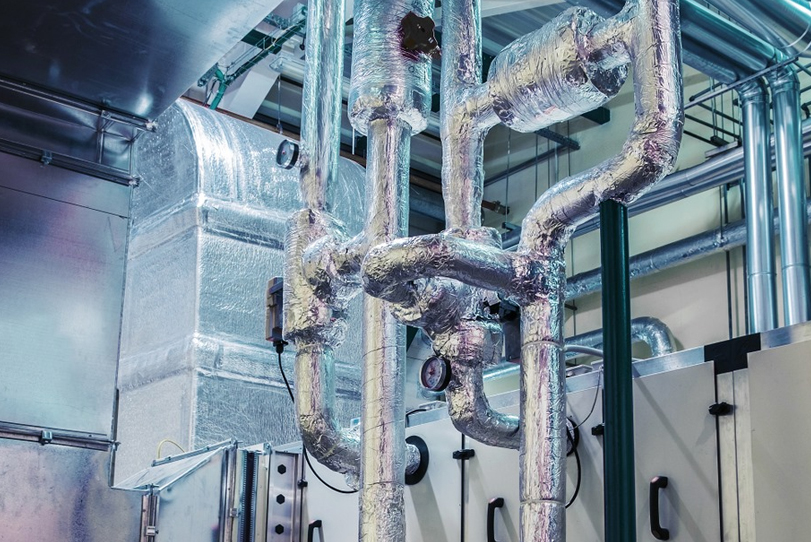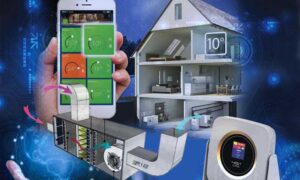Analysing the present circumstance, the changing adaptability pattern and the acceptance towards the new normal, MEP experts predict a bright and apprising future of MEP in India. They further feel that BIM is the way forward for embedded MEP designs.
Mechanical, Electrical and Public Safety (MEP) is the most discussed branch of sustainable construction. World around MEP services not only convert a building into a liveable space with healthy and ready-to-move ambience, but it also enhances the energy efficiency of construction structures. However, the present pandemic has impacted the building and construction sector and its impacts can be seen into MEP also. MEP service providers being a most critical aspect in the construction field have been facing the crunch of it. Although the Indian government has allocated required permissions for commencement of projects, but the question is, how will they bounce back to the previous momentum?
India’s construction sector stands as the second largest employed sector. It is estimated that almost 50 percent of the total migrants have been actively engaged into real estate construction sites as labour, and the present pandemic has largely impacted the construction sector of all. But there is still hope for resurgence of MEP as the fear couldn’t hold back the confidence of rebounding as the migrants are returning to normalcy with days passing by.
Present Scenario impacting MEP
According to Aniruddh Bapat, Head – MEP, L&T Realty, the industry is bouncing back to normalcy as the migrant’s labors are returning to site works and are prepping up to take up more responsibilities towards their work amid pandemic. Although, he feels that meeting deadlines for MEP experts will remain to be a challenge as most of the project time is consumed by the building construction. This limits the MEP designers and MEP experts to compromise on deliverables to meet deadlines.
However, talking about the availability of skilled labours, his views are different. “Availability of skilled labours won’t be a long term or a permanent scenario. Because, in a developing country like India, this situation won’t prevail for long as the migrants in India are returning to normalcy with time. So, I guess this situation will transform completely in a year or so.
Especially, if you consider the scenario of labors in a city like Mumbai, 80 percent of the total labours have already equipped their previous or newer responsibilities. Talking about the employment opportunities, the number of migrants / labours are high particularly in the rural areas or Tier-III areas; this can be due to the lack of opportunities, developments among the others.
Another major concern is the given deadlines and the realistic deadlines. In MEP, we have observed that, if a project has a commencement deadline of 3 years, of which the core department alone will consume almost two years in slab building, this further reduces the timeline for MEP to plan an establish their ideas, embedd it to the construction with appropriate finishing before handing over the end product to the client. We need to be more present towards the MEP execution in the construction projects and should provide them a legit appropriate time to ensure quality designs and qualitative finishing. No matter how best is your MEP design for a construction site if you don’t get sufficient time to enact on those designs to make it systematically perfect, which will further impact the entire functioning of the system. Availability of skilled professionals for construction MEP and HVAC in India is in abundance. I don’t see any short fall in it. We have an inventory of skilled people, HVAC technicians and equipment handlers.
I think the availability of skilled labours and skilled technicians in India are as good as in a developed country. If we see our availabilities skilled in the global market, I think we are at par with the developed countries
Critical design parameters for MEP
Ravi Saran, Swiss Rotors, Senior Accounts Manager – APAC, Swiss Rotors Pvt. Ltd. feels that BIM is the way forward. BIM reduces the number of physical aspects through automation. Right now we are talking about deliverables so let’s look at the tangible number of technology enhancements.
What we need to understand is, when we’re looking at designing a building in certain areas, you cannot have a full moon for every building and every location, it has to be designed; but those aspects, under the present circumstance can wait. Today, what needs to be addressed is there are room for energy solutions where we can provide a better solution with a lesser initial CAPEX as well. And the region where we don’t really want to enter into is, the lifecycle costs. So when initially incorporate a system, which is addressing the life-cycle cost, will be the way forward.
And the designing part is where we have consultants who look at the latest technology and how we can enhance it or make it more efficient, how we can include them without breaking up the initial capex is very good. So you have to keep upgrading yourself and when I’m trying to emphasise on upgrading yourself, mean that you are incorporating more CAPEX; new initial CAPEX need not to go up and this is the thought process we must have; this mindset has helped us. Basically involving more in the process, when you’re investing in a technology or R&D in developing a technology is one aspect, and making it viable is another. When you start investing in making it viable, this is where the full circle of success model comes in. Because using a smart phone became viable it became a success story because what made it viable, because we involve technology in the process which is very cost effective. So once you come up with cost effective solutions incorporated in the design stage itself, you can see the evident results. Look at the latest technology available to you what is trusted because there is a certification programme involved. Don’t hesitate, we have that available appropriate things to incorporate,it’s just that people are not aware of other aspects, use the technology the initial switch itself and make the entire project viable for everybody.
Standardised integration of HVAC designs for better IAQ
To elaborate on the need of standardisation, Ujjwal Singh, Director, Levanter Air Systems say When the pandemic happened, everybody was seeking for newer ways of newer products so the product that we developed called sanitising tunnel. This primarily aims a tunnel where sanitisers are sprayed across the areas through very fine nozzles further sanitizing the people and the equipment that enter into that tunnel – This primarily aims to keep one safe from COVID infections.
That’s when the government has mandated to ban certain sanitisers for public use. They further prescribed guidelines and approved a standard mix for sanitisers. This is a commendable initiative, although it has incurred financial losses for various companies but still I think the Indian government made a fine decision by imposing a bank on certain mix for sanitisers and standardise the quality mix.
So when it comes to safety and hygiene in the present pandemic scenario, standardisation was an onus. The government has prescribed a certain mix for alcohol and other content. For instance, I recently bought a hand sanitiser and it had prophane contents along with alcohol. These are the mix which can be harmful for human hygiene. And standardisation of sanitiser mix is the only way out to bring in quality mix that can further cover the safety and hygiene aspects for people amid pandemic fear.
When we talk about the hygienic surrounding, then we have companies who provide safe and hygienic IAQ and they have metered a certain percentile of clean air indoor where human can sustain without any health hazards. But to insist on IAQ, they sometimes end up amending the percentile depending on the geographic conditions and convince the customer about the imperativeness of IAQ and educate them about the indoor pollution, so as to make them adapt a hygienic lifestyle. So, standardising metrics for hygienic equipment and materials for to ensure higher IAQ indoor and in the closed premises should be an obligation for all.
Safety embedded MEP designs
Suhas Randive, MEP Consultant, Design Engineers says – While designing a system, we always consider the efficiency of a system and its required notes, occupancy percentile, number of occupants, percentile of indoor air, equipment loads all these factors are considered. Also, the diversity factors achieved with the occupancy percentile. MEP designing usually consider around 20 percent more on the safety factors, as rest are being meted during the application.
The reason for minimal consideration of safety and efficiency designs is that the customers requirement changes spontaneously, so does the approved plan, so the end designs are mostly different the initial proposed ones. So, embedded designs at the initial stage is doesn’t always work owing to other practical and feasible construction and design aspects.
For instance, the number or equipment load assumed v/s the actual equipment load; number of initial occupancy v/s original present occupancy numbers – these numbers aren’t constant. So, the layout, points, electrical components will change and so does the HVAC designs in MEP. So, to be om the safer side, the initial designs always have an additional 20 percent of safety layouts in MEP designs.
Increasing cost of HVAC functions amid additional expenditure for COVID safety
Aniruddh explains that there are two aspects in that one is sanitisation aspect, which means the market is flooded with sanitisers, and a lot of other such gadgets like sanitising tunnel. Apart from that, in HVAC now people are lnow emphasising more on air quality and are giving importance to better the IAQ, how to make the indoor air quality COVID free, and these all we, as a realty company, have been getting queries from the market and MNC clients that, what are you doing on a HVAC to make the indoor air purification. These all queries are constantly coming, when we deal with MNC clients. So, one of the good features, I have come across is UVGI. We have even put it on a trial basis in our AHUs as these ultraviolet germicidal irritation, which is also incidentally recommended by ASHRAE for COVID control. So, we are working on that and probably I think this UVGI should be able to serve the purpose of making the IAQ more efficient because this is a very old technology in hospitals for verification of that. I was searching it on google, and that’s when I came to know that. Initially, it started from TB hospital where they used to get the purification of supplier they used to route it through the ultraviolet rays from TB hospital. So, obviously, this should serve the purpose and IAQ should be better and by using UVGI. I have personally started using it on few of our AHUs as a dry run for my building.
Bottom line impacts
The pandemic has special impacts because, at least people will expect the social distancing to be followed. So your office occupancy has to be impacted. Then lift traffic analysis will be different. A lift carrying 20 passenger will now bear only half of its original capacity. So, owing to the social distancing norms, the lift will run with half of its designed capacity. These things will definitely reduce your costs CAPEX and bottom line will get impacted, no doubt about that. But once you have that confidence inside the air conditioned spaces if you can showcase that your indoor air quality parameters or so and so, ppm levels are this carbon dioxide levels and if these things are maintained and I am also exploring I am talking to these UV manufacturers, can I can I also display on my monitor. What is the level of, you know, COVID-19 freeness in the office areas, if I am able to attain that data, then I am sure this will boost the people’s confidence and adaption will further intensify.
We need to be more present towards MEP execution in the construction projects provide them an appropriate timeline for quality deliverables.
Aniruddh Bapat, Head – MEP, L&T Realty
There are room for energy solutions where we can provide a better solution with a lesser initial CAPEX as well.
Ravi Saran, Swiss Rotors, Senior Accounts Manager – APAC, Swiss Rotors Pvt. Ltd
I think the Indian government made a fine decision by imposing a ban on certain mix for sanitisers and standardise a quality mix.
Ujjwal Singh, Director, Levanter Air Systems
MEP designing usually considers around 20 percent of the safety factors, as rest are being meted during the application.
Suhas Randive, MEP Consultant, Design Engineers
Cookie Consent
We use cookies to personalize your experience. By continuing to visit this website you agree to our Terms & Conditions, Privacy Policy and Cookie Policy.















